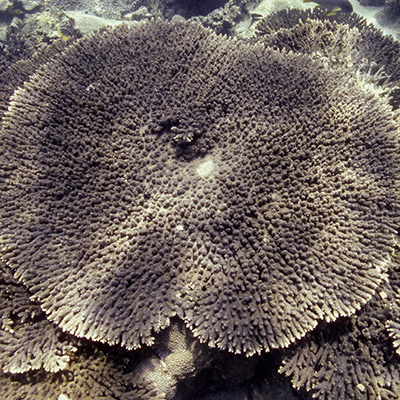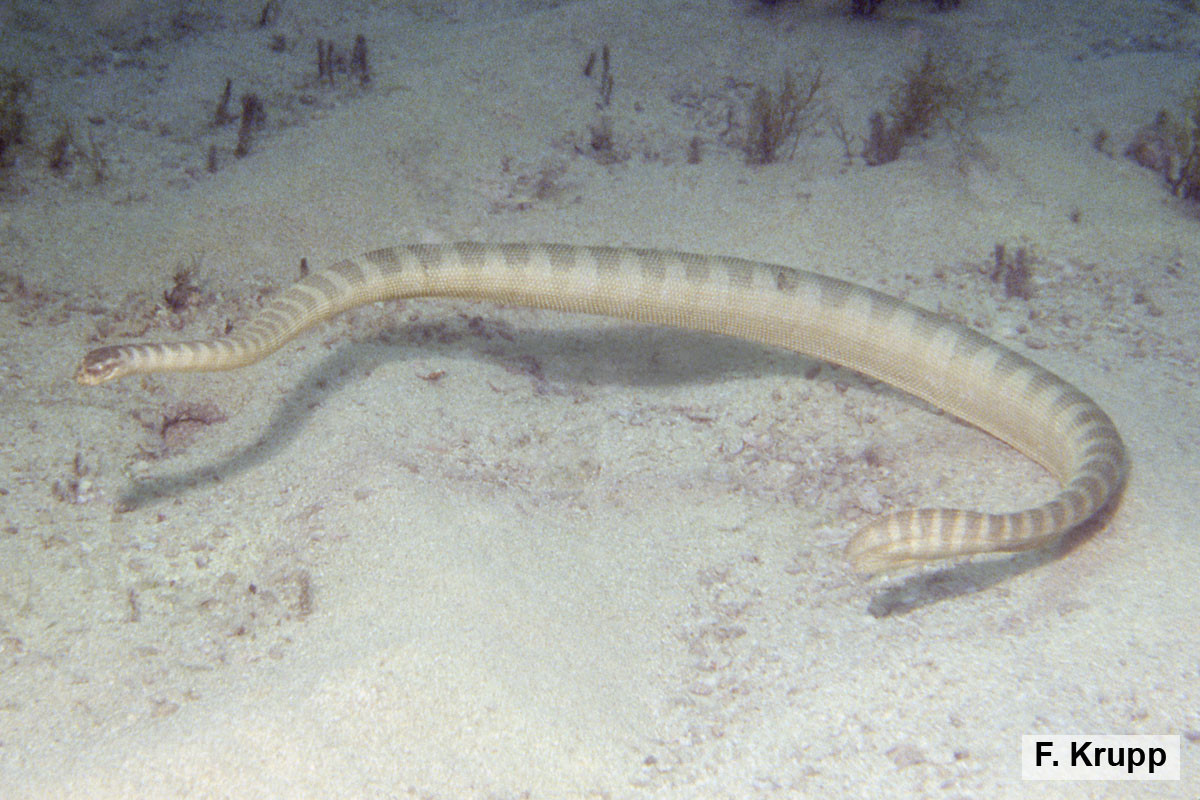Name: Hydrophis lapemoides
Common name: Arabian Gulf Sea Snake, (in Arabic: Af’a al-maiya)
Local name:
Scientific name: Hydrophis lapemoides
Classification: Class – reptiles; order – scaled reptiles; family – sea snakes (Elapidae)
Synonym: This species is sometimes treated under the genus Chitulia. Individuals are easily confused with juveniles of Hydrophis cyanocinctus.
Size: Specimens are usually about 95 cm long, but may reach a maximum length of 110 cm.
Habitat:
Arabian Gulf Sea Snakes inhabit warm, shallow coastal waters over reefs, seagrass, sand or gravel substrate, but can also enter and dwell in freshwater bodies temporarily. Specimens occasionally caught as bycatch by trawlers came from depths of 27 30 m. Little is known about this species’ biology. As in all true sea snakes, the entire life cycle takes place in the water and the snakes never voluntarily come ashore. They can dive deep and remain underwater long, but eventually must surface to breathe. Their main source of prey are fishes, which are caught by means of a swift bite, administering a highly toxic, fast-acting venom that kills the victim and aids in its digestion. The powerful venom may be fatal to humans, but is used for feeding rather than for defense, and since the snakes are usually placid, they present little threat. The mode of reproduction is ovoviviparous, meaning that eggs develop and hatch within the uterus and the snake gives birth to well-developed live juveniles. Adult individuals are sometimes found with barnacles (Platylepas ophiophilus) settling on their skin.
Distribution:
Hydrophis lapemoides is found in the Indian Ocean from the Arabian Gulf and the coast of Oman, eastwards along India and Sri Lanka to the Andaman Sea coast of Thailand. It is usually regarded as a rare species, but is very abundant in the Arabian Gulf and in nearshore shallow waters in the Gulf of Oman and has in fact been considered the typical sea snake species in the Arabian Gulf.
Conservation status:
The IUCN Red List of Threatened Species classifies the Arabian Gulf Sea Snake as Least Concern (LC) in its global assessment.
Description:
Like in other sea snakes, the elongate body is well adapted to the marine environment by being laterally compressed and ending in a paddle-shaped tail. In this species the body is rather bulky, with the posterior part having 2 3 times the diameter of the neck and the relatively small head. Scales on the thickest part of the body are small, more or less squarish or hexagonal in shape and juxtaposed. Located on the upper surface of the snout are the small eyes with round pupils and, more anteriorly, a pair of small crescent-shaped nostrils that have interior valves, which are closed when the snake is under water. A pair of enlarged poison fangs is present frontally in the upper jaw (maxillary bone), followed by 8 11 solid maxillary teeth posteriorly. The fixed tubular fangs are just a few millimeters in length and receive a potent venom from large glands on the sides of the head. Coloration consists of a striking pattern of about 30 50 dark bands along the length of the body, with interspaces 2.5 times as wide as the bands, contrasted against a yellow, sometimes whitish to dull green or gray background. The bands become significantly broader dorsally, but are thin on the sides and the dark-tipped tail. The top of the head is usually dark, with a yellow horseshoe-shaped mark in front of the eyes, disappearing with age.








